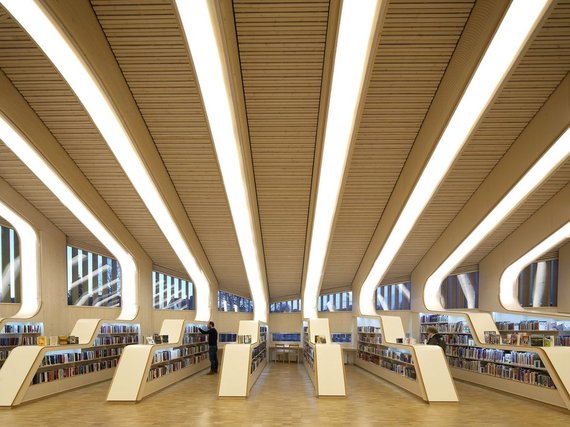
- #Archicad libraries how to
- #Archicad libraries update
- #Archicad libraries archive
- #Archicad libraries code
- #Archicad libraries windows
The API functions related to Library Parts give all of the necessary support to build a new Library Part from scratch, and provide the possibility to modify, delete or append any section in existing ones. For custom sections, this value is not checked for validity and you can use it for any purpose, like version controlling. Sections which can have only one instance always have the value zero. There are sections which may have more instances in the same Library Part, like the 3D binary section. The subIdent field gives a sub-identifier. ARCHICAD never modifies or deletes custom sections. Of course you can insert sections with custom identifiers to save your own data into the Library Part. Predefined identifiers are also listed, and ARCHICAD can work on these sections only. The sectType field is the identifier of the section, which is implemented as a four byte code. Each section has an identifier and a subcode which allows implementation of more than one section with the very same type, as can be seen in the API_LibPartSection structure. There are no any API functions to give support to work on their content.Ī real Library Part is built from several sections, as you can see and also edit in the Library Part dialog of ARCHICAD. They become Library Parts, just because they are located in the active library folders. For example macros are simple text files, pictures are standard TIFF, GIF etc. Some kind of Library Parts do not contain any ARCHICAD specific information. The definition of a Library Part is described in the API_LibPart structure. For a detailed description see the Library Part Subtypes section. This tree structure gives much more flexible classification of library parts.

From ARCHICAD 8 a new kind of library part hierarchy was introduced: every library part is derived from a subtype parent library part. Up to ARCHICAD 8 applicable types of Library Parts were enumerated in the API_LibTypeID structure. The index is the index of the Library Part in the library part pool, which contains the parts from all the active libraries. The drawing elements (objects, doors, windows, lamps, and zone definitions) which require a Library Part to reference, do it with indices. The Library Part Manager functions can work only on registered Library Parts. The active library folders are enumerated and the Library Part files are registered in ARCHICAD. This capability lets the add-ons store their library parts in their own resources and use them as a read-only library added to the active libraries ( ACAPI_Register_BuiltInLibrary).
#Archicad libraries archive
With the ACAPI_Environment function you can reset the installed libraries, also you can add a new folder, or even to give a complete list of folders.įrom ARCHICAD 8 libraries can be packed in and loaded from archive files and module resources as well. The active library folders themselves can be manipulated. Library Parts are collected into library folders, like the default ARCHICAD Library. - What's the required format of User Controls in the.

#Archicad libraries how to
#Archicad libraries update
Other improvements in this update focus on what Graphisoft describes as an ‘enhanced integrated design workflow’. PARAM-O is available in Archicad 24 Update 3.
#Archicad libraries code
Creating reusable parametric objects without writing code has made this process quick and easy for us.” “Because we carefully design every project down to the smallest detail, we need to build a lot of custom components. “The nodes make it so easy to work in PARAM-O,” said Peter Koncz, BIM Manager at Leroy Street Studio in New York.
#Archicad libraries windows
With PARAM-O, a new parametric object design tool built into the BIM software, users can create custom objects and building elements using an ‘easy-to-use’ graphical interface developed with the architect in mind.įirst introduced as a technology preview on Windows in July 2020 for Archicad 24, the latest update makes PARAM-O available for users on macOS as well.Īccording to Graphisoft, large architectural practices will appreciate that they can develop custom, reusable, manufacturer-specific object libraries that comply with their own offices’ design and documentation standards. PARAM-O is designed to make it easy for architects to create parametric libraries without having to write any codeĪrchitects can now create building component libraries parametrically inside Graphisoft Archicad 24 without having to write a single line of GDL code or script.


 0 kommentar(er)
0 kommentar(er)
